Category Archives: Green Walls / Roofs
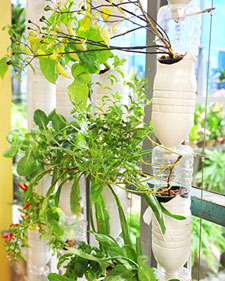 Image: Martha Stewart website.
Image: Martha Stewart website.
Window Farms is a term used to describe hydroponic growing systems (made from recycled materials) that are sited within a buiding’s windows.
A type of living wall – except that its a living window.
The farms were developed as a technique to allow city folk who lived in small spaces the ability to grow and eat their own food.
An interesting idea but I would never give up views or prevent light streaming into my living room just so I could grow some veggies. Designing a vertical gardening system to sit in an apartment window seems odd to me .
If I can not afford a house with a garden I am highley unlikely to have a house with loads of windows. And if I only have a few windows I would be very very reluctant to loose any of those windows to vegetation – no matter how organic the vegetation may be.
Placing an object in front of a window needs very careful consideration. Evenmore so where space is limited.
Windows are about views and light. Windows can assist in creating an illusion of space – borrowing outdoor views is a great design trick if space is limited.
Surely the most depressing interior arrangement is to block windows?
Can these farms sit perpendicular to the window? If the vegetables need more light than the adjacent wall can provide perhaps just a row of plants on the windowsill may be a good compromise?
This enviornmental design solution seems to be solving one issue whilst creating a few other problems.
I support this type of thinking – its great. But the solution may need some design tweeks. Thankfully the designers are into crowd sourcing – For further details on this project check out http://www.windowfarms.org/
3 Comments | tags: crowd source design, edibles, enviornmental design, grow your own, living walls, urban farms, window farms | posted in Green Walls / Roofs


When I met with designer Armando Raish from Treebox I began listening. He had tested his living wall systems for a couple of years. This guy has a horticultural and construction background and knows his stuff.
Treebox are releasing a new version of their Easiwall Green Wall. Garden Beet shall be discussing the product in the next weeks.
Armando tells me that the Easiwall Living Wall System is made from recycled plastics, is rigid and will allow a plant’s root system to breathe – thereby preventing the plants from becoming pot bound and eliminating the need for an extensive plant replacement program. Stay tuned.
1 Comment | tags: easiwall, living wall. diy living wall | posted in Green Walls / Roofs
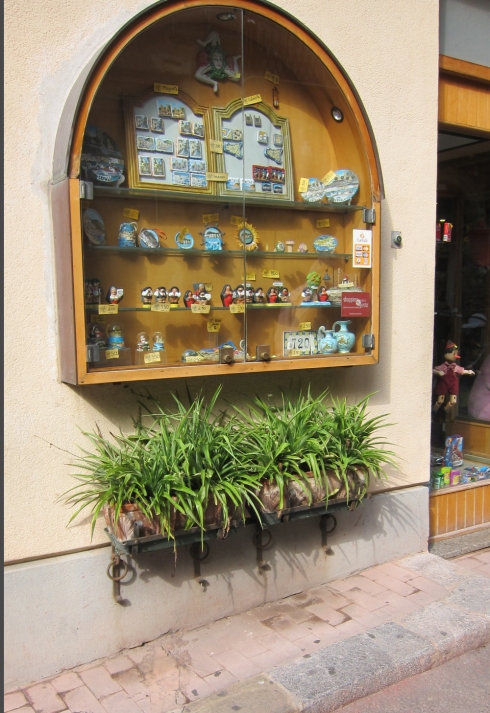

The toy shop in Cefalu, Sicily knows how to use its wall planters to benefit its shop image and the public realm.
What fabulous product placement, streetscaping and use of walls. Perhaps this is living walls pre Patric blanc?
These photos illustrate a great technique to blur the private and public domain.
The photos also illustrate how urban greening can occur in narrow, concrete spaces. No need for the wide ‘nature’ strips found in the car culture countries of the US and Australia – just use the vertical concrete spaces created by the walls of almost every building.
Love it!!
Leave a comment | tags: italy, living walls, sicily, streetscape, Urban Design, urban greening, wall planters | posted in Green Walls / Roofs

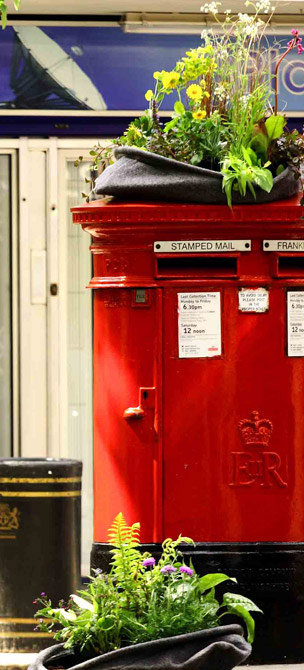
Woo – great images. Jeepers even the global engineers at ARUP are busy making the revegetation world look edgy and slick. Its about time. Scruffy habitat does not convert the unconverted.
Dusty Gedge, ARUP Engineers and Sky Garden have created a product called ‘Pocket Habitat’. A ready to install mini habitat suitable for instant urban greening on any roof top or ground level flat surface.
Each Pocket comes pre-seeded with a range of soil and other growing medium profiles. The pockets allow different substrate depths to be created on most flat surfaces thereby providing opportunites for greater biodiversity. The product is also said to have good water retention properties.
The contemporary planters are modular, come in various colours and can be arranged to allow aesthetic freedom – ooh landscape architects will love that.
Installing habitats on rooftops is no easy task. Apart from the logistics of moving various strata to the tops of buildings there is also a need to provide habitat diversity by creating various micro-climates and soil depths. The Pocket Habitats attempt to overcome these problems.
The concept of a free-standing soft sided recycled fabric planter is not new. Woolly Pocket Gardening Company launched a similar product onto the market in early 2009 with their Meadow Range. The Pocket Habitat however is different insofar as it is a ready made planting bed intended for the promotion of habitat.
2 Comments | tags: contemporary planters, ecology, pocket habitat, recycled planters, revegetation, urban greening, woolly pockets | posted in Green Walls / Roofs
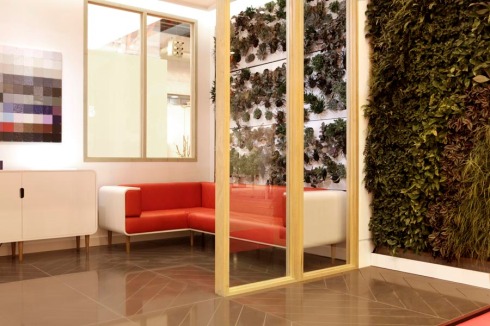

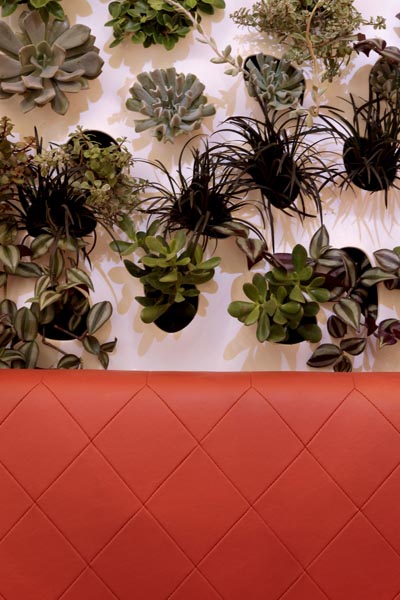
Photo Credits: At 100% Design at InsideOut by KWI&POM, DuPont and Biotecture launched a stunning new solution for living walls using the 3D Math collection of decorative panels made from DuPont™ Corian® hi tech surfaces. Photo by Jon Tonkin for DuPont and KIWI&POM
Natural gardening types sometimes argue that growing gardens vertically is a fad, its unsustainable, its commercial trickery, its a gimmick, lets get back to terra firma. Meanwhile those who know that vertical gardens can work are busy exploring its potential.
At the 100% Design Expo (London, Earls Court 2010 September) product designers have morphed plants with cladding. An architect can now cost planted cladding by the square metre. Wow. That could not be done 2 years ago.
Does it work?
It depends on many factors but so does every garden bed. No need to dismiss an entire garden bed typology just because it’s a bit different. Yes it may need a bit more water but if it helps to consolidate urban sprawl perhaps it aint so evil (see this post for further discussion on vertical gardens and urban sprawl)?
The cladding: what is it?


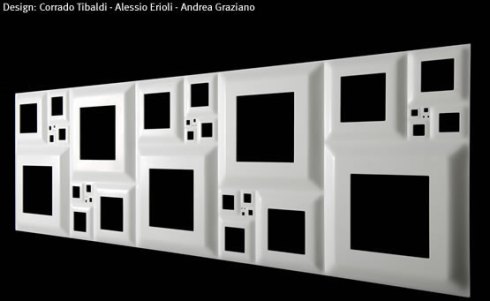
The product designers at DuPont have created ‘Corian 3d Math Serious’. Patterns based on mathematical equations.
Patterns such as Fibonacci, Voronoi and Gauss are used by the designers to create 3 dimensional forms for walls.
Mathematical equations have influenced the design of surfaces before (such as the South Eastern Freeway Noisewalls, Melbourne, Australia) but DuPont have used these patterns to create a frame for vertical gardens. This is certainly a new concept (to me).
DuPont enlisted the help of Biotecture to create the green wall. The cladding is then placed over the living wall or vertical garden to create a beautiful rhythmic frame for the strapping foliage of the vertical garden behind.
The possibilities are endless. Garden Beet will certainly be experimenting with this material at play time.
3 Comments | tags: 100% design, cladding, du pont, garden design, living walls, Vertical Garden | posted in Green Walls / Roofs
UK manufacturers have finally caught up with the vertical garden, green wall and living walls trend. Today in far flung corners of the Glee Trade fair are two wall planters that make growing plants on most walls a reality.
Burgon and Ball have just released onto the market a neat little fabric wall planter. Meanwhile the US Woolly Pocket designer and manufacturer Miguel Nelson commences marketing his robust well designed Woolly Pocket in the UK and European market via Glee Trade Fair.
Corner A – Woolly Pocket.
A robust fabric wall planter made from recycled plastic, enables a plant’s root system to breathe, comes in various colours and three sizes. Can be used inside and outside. The system is modular and can allow a small or large green wall to be established with ease.
Corner B
Burgon and Ball Wall Planter. A neat black wall planter that comes in one size: around an A3 size of paper. Made from plastic. Outdoors only. A plant’s root system can not breath.
So what does Garden Beet think?
The Burgon and Ball planter appears well made and would be great for making a relatively cheap little herb garden on an outside wall. The product however does not meet the quality or functionaility of the Woolly Pocket system.
The Burgon and Ball planter has a very small soil area – thereby restricting plant growth, nor does it allow the plant’s root system to breath – resulting in the plants eventally becoming pot bound, it can not be used indoors and is not designed to provide coverage of large walls.
If all you want to do is grow a few basil plant each year Burgon and Ball have created a reasonable well priced solution.
However if you are serious about creating a thriving living wall you would still invest in the ever so funky Woolly Pockets.
3 Comments | tags: burgon and ball, living wall, Vertical Garden, woolly pocket | posted in Green Walls / Roofs
Well it seems I missed the opportunity to have another entry on The Dry Garden: A skeptic’s view of vertical gardens in the LA times.
Stupidly I made the following point on the author’s blog. But she removed it – partly because I insulted her for which I apologise – but my points remain valid and need to be considered within the vertical garden debate. This was my comment.
Assuming one of the best ways to reduce our environmental impact is to consolidate urban sprawl should we not welcome green walls ?
A vertical garden allows for efficient use of space. It also allows gritty industrial sites to be ‘greened’ without the need to treat contaminated soil (which is very, very expensive).
A living wall may use more water than a veg garden on the ground but it allows people to live in a more space efficient way.
To those who argue that we should be planting in the ground to conserve water: Can you be sure that in the long term your traditional ground plane veg patch or raised garden bed is the best way forward?
Green’s assessment on Woolly Pocket was poorly researched. Her findings were very selective. She used one of the first models of Woolly Pocket (that is not even sold) to assess its suitability for her readers.
Following deletion of my comments from her blog Green commented that I am retailer of Woolly Pocket. Unfortunately she did no further research on my background and did not discover that I am a Landscape Architect (who has: won an industry design award for work on a large scale infrastructure project in an arid climate; a Masters In Landscape Architecture; a Post Grad Planning and Design; and finally a BAppSc (Urban Planning).
Now am just a semi-humble retailer of Woolly Pocket, an active Woolly Pocket gardener, landscape designer and assist a hydrogeologist to assess contaminated soil in residential areas.
3 Comments | tags: green walls, living walls, Vertical Garden | posted in Green Walls / Roofs
This post is in response to the article on Vertical Gardens in the LA times written by Emily Green. http://latimesblogs.latimes.com/home_blog/2010/08/vertical-gardens-skeptic.html
and on the writers blog http://bit.ly/9oJMWa.
Have you heard of the need to reduce food miles? Grow food closer to home? Are vertical gardens really using more water than a large sprawling suburbia where everyone plants into the ground?
Surely one of the best ways to reduce our impact on earth is to consolidate urban sprawl.
Dense living may sound horrible to those who like their open space but if its well designed medium density living can be great.
This is where a vertical garden strength comes into play.It allows for efficient use of space. It also allows gritty industrial sites to be ‘greened’ without the need to treat contaminated soil.
A vertical garden may use more water than a veg garden on the ground but it allows people to live in a more space efficient way. Can you be sure that in the long term your traditional ground plane vegy patch is the best way forward?
Lots of people have agreed with you but I feel they have not been given the complete energy consumption story.
Emily felt this last comment did not justify Woolly Pockets being considered a good design. And went on in her blog to say
‘So what? That does not make recycled plastic wall hangings the only alternative, or even a good one.’
Now this comment was just asking for a response surely? mmm no response to vertical gardens providing less water than the traditional horizontal planting bed overall…maybe I am right?
OK so now we are down to the argument as to whether Woolly Pocket is a good product.
Emily – you do not like the product – fair enough – perhaps you should be fair to the designers and assess the product in its current design
your assessment has been made on the first protype (as shown in your photo)
surely a good journalist would interview the designer to get the most current up-to-date information?
anway, over and out and look forward to post 5 years when a proper assessment can be made
And guess what her response was? I offended her – but its perfectally fine for her to lay abuse into a designers product without all the up-to-date product information.
> I have deleted your last comment because of the cheapness of the remark
> and you had made your points exhaustively. It was an opinion piece and it
> was plain from the outset who I spoke to and didn’t. The photo was taken
> last month. I’m sorry that you took offense. My advice would be for you
> to construct your own argument rather than mine my site with insults.
Oh dear Emily has now completely deleted my comments. Damn. Its very annoying to be deleted. Fair enough its her blog but such a shame – we could have actually had a proper debate about this issue.
Now, interesting she choose to focus on my childish comments rather than rebut my arguments. I am sorry. Come on, Emily. Speak to me.
3 Comments | tags: Urban Design, vertical gardens, water consumption | posted in Green Walls / Roofs

..ho hum ……….yet another garden designer stated that vertical gardens were a fad…AGAIN……….
Well my plants are so happy with their wall planters that they are exploding with the most ridiculous colours – I never intended for yellow/pink/purple flowers to all come together – this garden was only ever temporary……(no not a fad, but a trial garden).
I never thought I would see it go to flower …but here I am learning that perhaps red and pink candy coloured geraniums are really quiet fun when placed on a wall with other plants that flower with a yellow…..do not recommend the red brick backdrop though…..next time I will do it differently…more yellow.
Like all gardens the success depends on the maintenance. My indoor living wall has suffered over the last two weeks. I was super busy and it did not get watered ….my ferns needed to be kept moist ….our living room can get very hot and many of mine have shrivelled….but there are young fronds emerging so I should be able to revive them – I have moved them outdoors to my shady vertical garden – – much cooler out there
Such as shame that people are able to dismiss and turn away from possibilities.
Am very keen to experiment with blue hydrangeas.
1 Comment | tags: green walls, indoor vertical garden, living walls, Vertical Garden, wall planter, wall planters, woolly pocket | posted in Green Walls / Roofs

Recently I installed this living wall and am waiting on some more indoor plants before its complete. Meantime I stumbled across these begonias and gerberias being sold off cheaply at the local supermarket. Am now using the vertical garden as a temporary planting bed-cum-vase. I would consider leaving the begonias in long term however am fairly sure these plants do not like being crowded. The gerbera is more about some weekend fun.
Am seriously considering using this garden as part indoor planting bed part vase – possibly indoor garden wall art? Beware if you start thinking this may be an idea to consider – every time a new plant is installed in this garden dirt and plant debris ends up on the floor.
Leave a comment | tags: garden wall art, green wall, indoor garden, indoor gardening, living wall, Vertical Garden | posted in Green Walls / Roofs
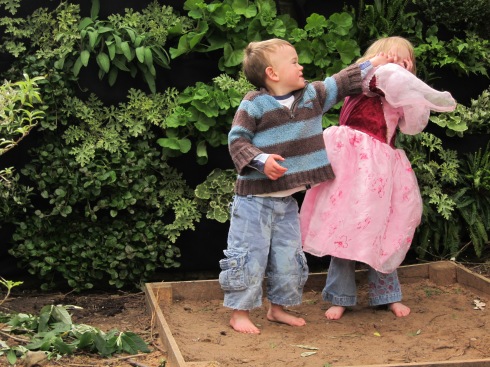
To be recommended for a TV lifestyle chat program by the RHS for living walls (following a living wall installation at Chelsea) makes me feel mildly excited. Garden Beet used Woolly Pockets at Chelsea. Woolly Pockets allow anyone to build their own living wall with ease.
Miguel Nelson the artist and inventor of Woolly Pockets is a pretty clever chappy and its his design thinking that is changing the garden opportunities available for those in urban areas. Stay tuned.
Leave a comment | tags: living walls, RHS, vertical gardens, woolly pockets | posted in Green Walls / Roofs
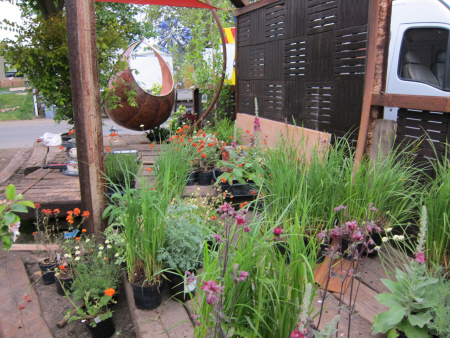

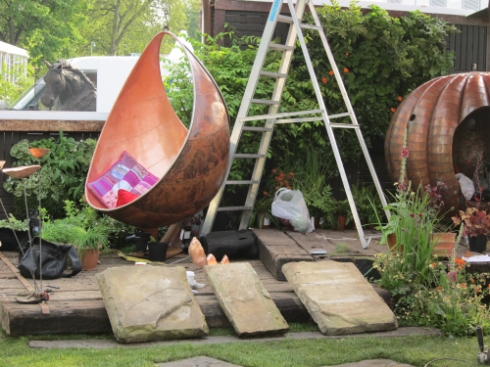

Here are some working pics of Garden Beet’s vertical gardens for Steve Myburgh Designs. The stand is coming together with all the various wall planters. Woolly Pockets are providing a lush backdrop for Myburgh’s hanging copper chairs. I have found the Chelsea Flower Show to be pretty exciting – I am totally in awe of the various show gardens – loads of £££££ have been spent and its all very la de da – ideas are everywhere. Much better than the Melbourne Flower Show back in Australia. Really the two do not compare in terms of scale.
3 Comments | tags: chelsea flower show, hanging chairs, RHS chelsea flower show 2010, steve myburgh, Vertical Garden, wall planters | posted in Green Walls / Roofs
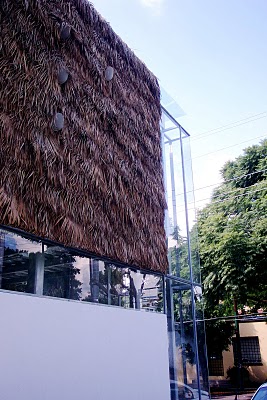
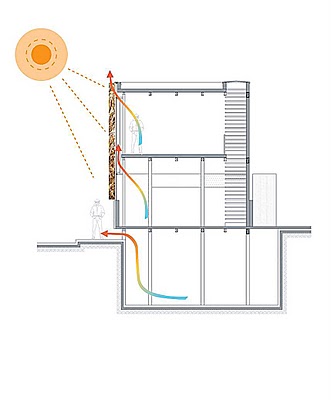
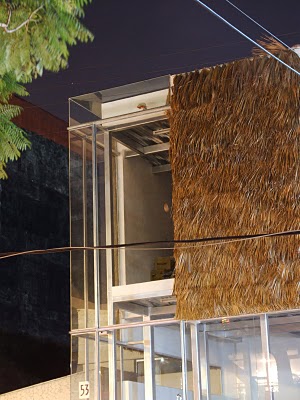
Thanks Eye Candy for these pictures.
Architects REC Arquitectura have been playing around with traditional roofing materials and have transferred the straw, or plalapa, roofs of Mexico and used the material for walls. Very beautiful, innovative and contemporary use of a traditional building material. It’s also an interesting twist on using roofing materials on walls given the growing interest in green roofs and now living walls.
If only UK planning could understand this design approach. You do not have to create replicas of history to pay respect to historical built form.
If this design were to be translated into the UK landscape (using the traditional English thatch on a wall) it would never get past ‘Pete the Planners Rubber Stamping Desk’. It has a flat roof. Yawn yawn. But if you live outside the UK here are the architects contact details http://www.recarquitectura.com/home.html
Leave a comment | tags: green roofs, green walls, living walls, REC Arquitectura, Urban Design | posted in Green Walls / Roofs

If you are ever after Australian natives Austraflora have a fabulous range of plants suitable for the domestic garden. I don’t know whether they ship their plants internationally but I would love a Banksia ‘Birthday Candle’ or two in my UK garden – might have to bring the dears indoors – mmm indoor vertical garden of banksias – now that would be an experiment. Look great if it would work.
Surely there is no harm in a few aussie natives in the UK domestic environment? Aussies have enough European plants……but it does not really work like that..does it?
I was very lucky to work with both Bill Molyneux and Sue Forrester (the original founders of Austraflora) when I first graduated from my Landscape Architecture course. Crazy guys who are into the aussie bush in a big way – at the time my plant knowledge was worse than terrible – still is- but I learnt a bit from those guys so a big belated thankyou.
Check out Austraflora’s new website for plenty of great info on Australian Plants http://www.austraflora.com/
3 Comments | tags: austraflora, banksia, Vertical Garden | posted in Green Walls / Roofs
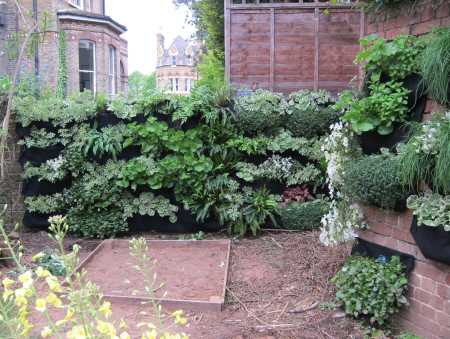
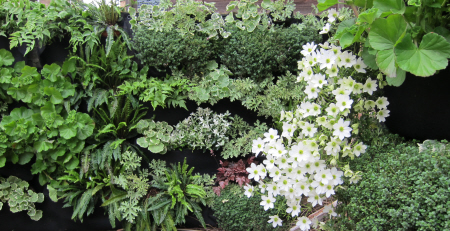

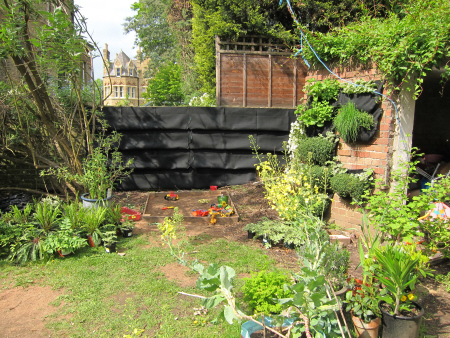
Did I ever mention Woolly Pockets? Sorry to bang on with the same old drum. I have been experimenting on an even bigger scale with vertical gardens and wall planters today. I read all these living wall sceptics in the news and blogs etc – sometimes referring to the whole concept as garden bling.
Well- it aint bling to me. Usually I grow to hate products – not this one – the more I use the Woolly Pocket the more I appreciate its worth. It can increase your gardening space, allows you to experiment with plants and the plants are pretty happy. I am having noddles of fun.
By the way my architectural backdrop does not reflect my abode. I live in the eyesore darling – but I don’t look at it – my neighbours do….
6 Comments | tags: green wall, living wall, Vertical Garden, wall planter, woolly pockets | posted in Green Walls / Roofs
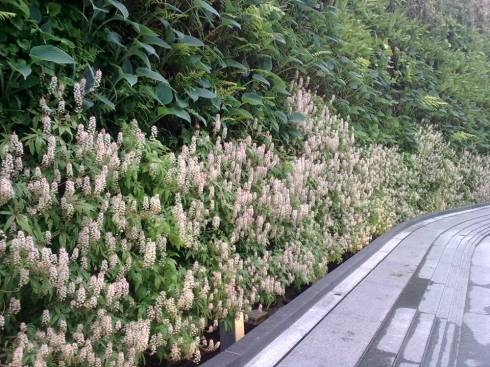

I gave the Westfield green wall planting a hard time a couple of months ago – it seemed bland and not varied enough for the size of the wall. I need to slightly amend my criticism. I returned to the Westfield living wall today and the planting design looked more varied now the plants have grown and some species are in flower. Even so Anthropologie’s vertical garden is still the fairest vertical garden of all – refer to this green wall article for further details.
Like the living wall at the O2 arena (photos here ) Westfield’s vertical garden has had some plant failures. My husband insists that most people would not notice so I suppose overall the plants are doing OK. Providing a maintenance contract is set up between the supplier and the customer plant failure should not be overly feared. Vertical gardens are a new trend and the industry will continue to learn through trial and error. However if I was engaging one of these complicated green wall systems I would want a tight maintenance contract to ensure I was not left with a brown green wall. This could be a costly exercise for the installation company.
Meanwhile my vertical garden made from Woolly Pockets are performing beautifully. I know I sell this system so it may seem I have a bias but I can honestly state that my plants are thriving. And I have treated these plants with cruelty. I have been experimenting with various planting arrangements and in the process I have uprooted plants numerous times (and accidentally left them in the sun with the root system exposed for a couple of days) . The plants are growing, flowering and look very perky indeed. And they are easy to install.
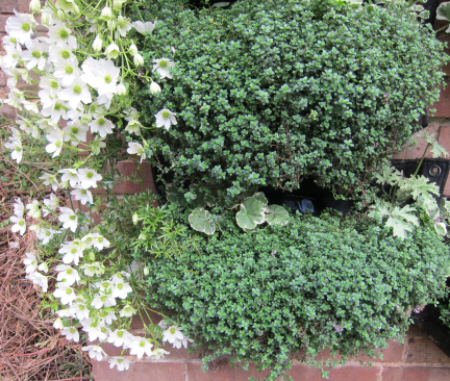
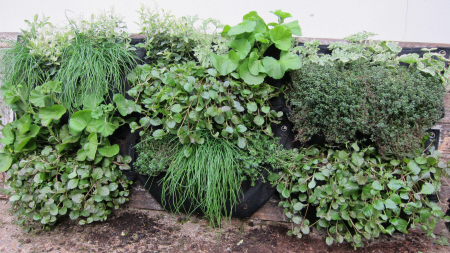
3 Comments | tags: green walls, living walls, vertical gardens, wall planter, woolly pockets | posted in Green Walls / Roofs

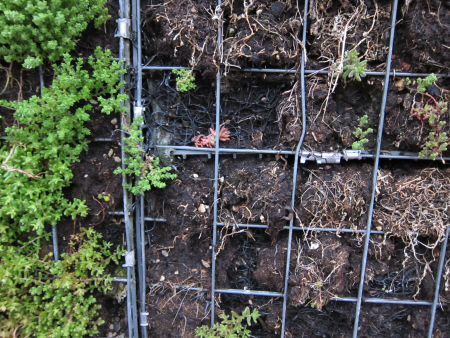

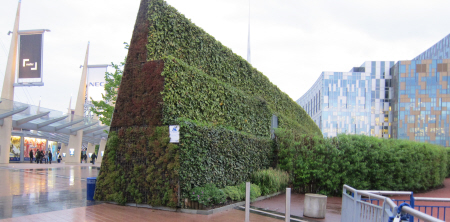
Here are some shots of the green wall at the O2 centre in London’s east. While some of the plants are failing (sedums) I like the shape of this green wall and how it sits within the broader landscape. The main section of the green wall (front and sides) use some type of netted soil system – the rear of the wall is treated with ivy (probably pre-grown sheets) and a wall of bamboo is also used to conceal the works area behind the green wall.
Am unsure on the details of the plants that are failing but it seems it may be one or two species that are not performing. In general is it the plants that are located in the top bands so perhaps they are not getting enough water?
2 Comments | tags: green wall, green walls, o2, wall planters | posted in Green Walls / Roofs
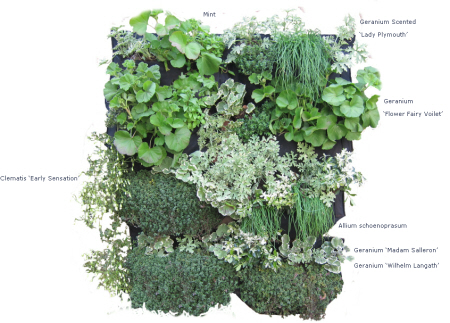
A frequent question from Garden Beet’s customers are: what plants can I use in my Woolly Pocket Wall Planter? Whilst the wall planter is suitable for many container plants I find that sometime people just want a bit more guidance on what plant species to use in their vertical garden.
I have therefore started presenting my various planting experiments on this blog and at Planting Ideas (located at the Garden Beet website).
If you have any planting suggestions or comments on my planting arrangements please let me know. I am always open to critique and ways of improving planting combinations.
1 Comment | tags: green wall, Vertical Garden, wall planter, woolly pocket | posted in Green Walls / Roofs
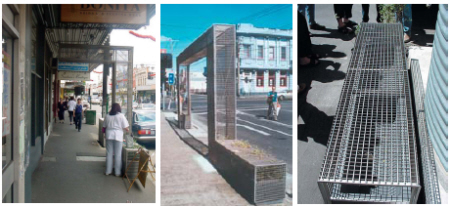
Above image Julian Ruxworthy
Sydney Road in Melbourne, Australia is urban with little room for ‘greening’
Sydney Road’s local government (Moreland City Council) is big on greening.
In 2000 the problem with Sydney Road (according to its local government) was is its lack of growing space for ‘greenery’. There were overhead powerlines galore, underground lines for this and that, local traders compulsory car parking spaces and loads of verandahs resulting in limited room for tree canopy. To overcome this problem there was a project called ‘Greening Sydney Road’.
The proposed design failed.
It involved mesh/trellis structures that moved within the footpath area, under the verandah and where possible above the pedestrian. The plants unfortunately failed to perform. I can only suggest that perhaps it was partly because the community wanted instant green and could not understand these metal climbing structures. From what I can remember Moreland’s planting palette would only allow indigenous plants. Crazy really. Do we really want habitat next to the butcher?
Anyway the local community revolted and the project was pulled.
The design concept was right but the detailed design required further resolution. Metal mesh structures were perhaps not the right solution. Perhaps the concept design can be realised with Woolly Pocket wall planters. I know its 10 years late but I think Sydney Road may still be in need of a few more green spots.
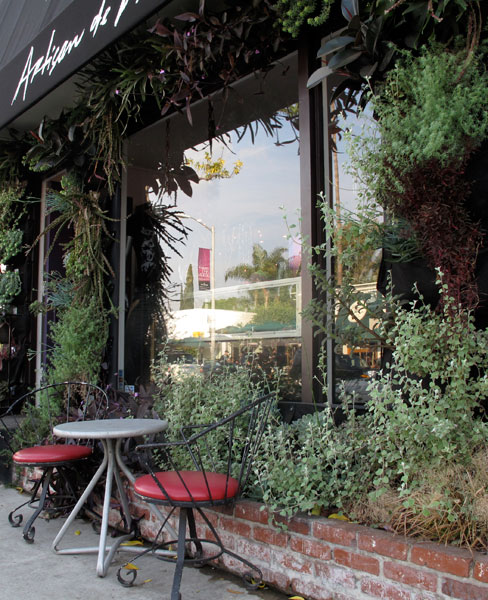
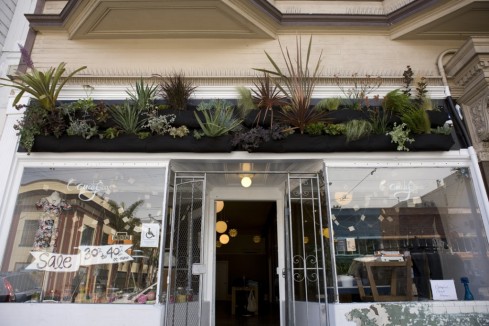
2 Comments | tags: greening, sydney road moreland, vertical gardens, wall planters, woolly pockets | posted in Green Walls / Roofs

Am playing around with Woolly Pocket Wall Planters at the moment and found a fabulous trailing plant that will work well in the planter to provide quick coverage.
In this Woolly Pocket I have planted
2 x (trailing) Ajuga reptans ‘Atropurpurea’ (it is in flower but I wanted the plant to quickly fill out so I have removed the flower to encourage leaf growth – the flower is now looking fab in my kitchen)
1 x (the silver leaf ) Geranium ‘Lady Plymouth’
1 x Salvia officinalis
1 x Geranium xxx
1 Comment | tags: plants, wall planter, woolly pocket | posted in Green Walls / Roofs
 Image: Martha Stewart website.
Image: Martha Stewart website.











































